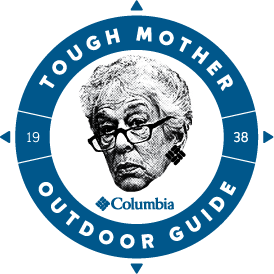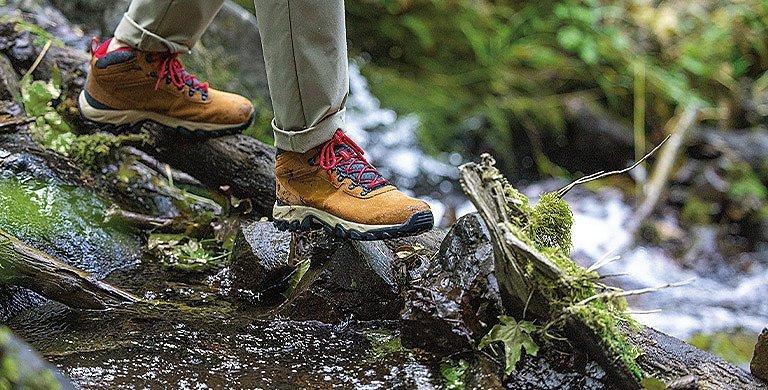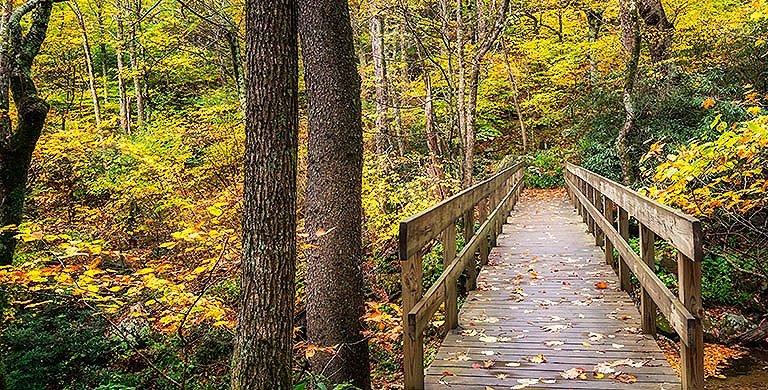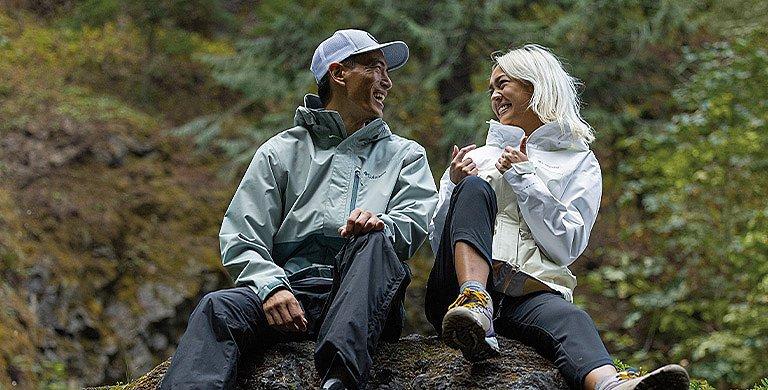HIKING
How To Choose an Accessible Hike
From wheelchair-friendly trails to tips for hiking with people with disabilities, we asked the experts for the scoop
BY RACHEL CAVANAUGH
Whether you’re organizing a group trek with people with disabilities or planning a one-on-one adventure, knowing how to pick out an accessible hike can be challenging. There’s a lot to consider, and if you don’t have adaptive needs yourself, you might not know what specifics to think about. Moreover, you may feel shy about asking. This shouldn’t keep you from getting out into the wilderness with your friends and having fun. You just need a little bit of information, along with some proper planning.
To help you get the knowledge you need, we reached out to Eileen May-West, program director for “Wasatch Adaptive Sports (WAS), ” and TyAnne Crook, mother of a WAS student. These disability advocates pointed out that planning a hike with people who have adaptive needs isn’t a whole lot different from planning a hike with anyone else. You simply need to figure out what everyone’s skill set is, note their endurance levels, and find a hike that matches those preferences. Learn more about how to plan a hike for people with adaptive needs in our interview below.
To help you get the knowledge you need, we reached out to Eileen May-West, program director for “Wasatch Adaptive Sports (WAS), ” and TyAnne Crook, mother of a WAS student. These disability advocates pointed out that planning a hike with people who have adaptive needs isn’t a whole lot different from planning a hike with anyone else. You simply need to figure out what everyone’s skill set is, note their endurance levels, and find a hike that matches those preferences. Learn more about how to plan a hike for people with adaptive needs in our interview below.
Q: When selecting a hiking trail for folks with adaptive needs, what are some specific considerations people should keep in mind?
Eileen May-West: Before you even get to picking the trail, one of the most important things to consider is what access to the trail looks like. Parking can be a major factor. Someone who uses a wheelchair might not be able to get out of their car if they have to park too tightly. Someone with limited endurance might use all of their energy just getting from their parking spot to the trailhead. It doesn't mean you have to avoid popular trails; you just may need to pick your timing or starting point more carefully. The trail itself might be perfect, but if you can't get to it, then it's a moot point.
As far as the trail itself goes, ask the people you're hiking with what they're hoping for. Trail selection is the same as with a typical hike. What are the group members’ fitness levels and challenge expectations? Try to get as much information as possible about the current state of the trail—maybe it could accommodate a wheelchair when it was built, but if it’s eroded now, that changes things. Lastly, “accessible” doesn't always mean paved. Natural surface trails can be accessible for wheelchairs, and there are plenty of people with disabilities who can hike technical singletrack as well.
TyAnne Crook: (Also keep in mind that) there isn’t a one-size-fits-all. Not even for people without adaptive needs. If everyone could remember this, it would help people with differing ability statuses.
Q: Given how widely needs vary from person to person, how can you determine which ones to consider?
Eileen May-West: Ask the individual as much as you can. A couple of great questions to start with are: “Tell me about yourself,” “What's your story?” “Have you hiked before?” “What kind of hiking do you like?” “Is there anything you need for our hike to be successful?” If you’re interested in learning about a wider range of disabilities and needs, reach out to your local adaptive sports organization or disability support group to see how you can volunteer and get to know us.
TyAnne Crook: (Agreed.) The best thing to do is ask what needs must be taken into account beforehand and then accept the answer they give. Don't try to discount what they say or come up with a reason they are wrong or the things they are overlooking. Believe me, they've given this a lot of thought.
Eileen May-West: Before you even get to picking the trail, one of the most important things to consider is what access to the trail looks like. Parking can be a major factor. Someone who uses a wheelchair might not be able to get out of their car if they have to park too tightly. Someone with limited endurance might use all of their energy just getting from their parking spot to the trailhead. It doesn't mean you have to avoid popular trails; you just may need to pick your timing or starting point more carefully. The trail itself might be perfect, but if you can't get to it, then it's a moot point.
As far as the trail itself goes, ask the people you're hiking with what they're hoping for. Trail selection is the same as with a typical hike. What are the group members’ fitness levels and challenge expectations? Try to get as much information as possible about the current state of the trail—maybe it could accommodate a wheelchair when it was built, but if it’s eroded now, that changes things. Lastly, “accessible” doesn't always mean paved. Natural surface trails can be accessible for wheelchairs, and there are plenty of people with disabilities who can hike technical singletrack as well.
TyAnne Crook: (Also keep in mind that) there isn’t a one-size-fits-all. Not even for people without adaptive needs. If everyone could remember this, it would help people with differing ability statuses.
Q: Given how widely needs vary from person to person, how can you determine which ones to consider?
Eileen May-West: Ask the individual as much as you can. A couple of great questions to start with are: “Tell me about yourself,” “What's your story?” “Have you hiked before?” “What kind of hiking do you like?” “Is there anything you need for our hike to be successful?” If you’re interested in learning about a wider range of disabilities and needs, reach out to your local adaptive sports organization or disability support group to see how you can volunteer and get to know us.
TyAnne Crook: (Agreed.) The best thing to do is ask what needs must be taken into account beforehand and then accept the answer they give. Don't try to discount what they say or come up with a reason they are wrong or the things they are overlooking. Believe me, they've given this a lot of thought.
Q: What’s the best way to ask what someone’s specific needs are? What should be kept in mind?
Eileen May-West: Never make assumptions about what you think someone may want or need. Ask if they even want to go in the first place. Take the time to learn about the abilities they have, what their movement style is like, what their communication and coping strategies are like, and give them as much control in their experience as they want. For a lot of people, that's 100 percent. For others, you might need to communicate with a family member or friend to learn about them. But if your goal is to hike together, then you should be open to whatever success looks like for each person.
TyAnne Crook: Be open and sincere. The words mean less than the intent you convey. Ask to understand, and accept their answers without criticism or judgment. If you don't know what a term is, ask. If you don't know why someone has a limp, you could simply say, “I notice you favor one leg more than the other. Is there an injury I don't know about and can help you with?”
"'Accessible’ doesn't always mean paved. Natural surface trails can be accessible for wheelchairs, and there are plenty of people with disabilities who can hike technical singletrack.”
Eileen May-West, Wasatch Adaptive Sports
Q: What are some of the most common issues with hiking trails that could be improved? Signage? Poorly detailed maps? Entrance widths? Visual barriers? What are the main concerns?
Eileen May-West: Everything you listed. In trail reports and descriptions, until there’s some standard used across the board, it's important to clearly define any terms used for trail description so the user knows what to expect. Make it clear if there are any sections on the trail that require specific strength or mobility like mandatory scrambles, exposed sections, rock gardens, or bridges. Try not to project which type of user is going to use the trail (like saying “wheelchair accessible”). Instead, accurately describe the trail (“paved two-way traffic,” “loose gravel under 5 percent grade,” etc.), and let the user decide if they have the ability to access it.
Q: What are some tips for making the hiking experience positive for people with adaptive needs?
Eileen May-West: Be open to whatever happens, always lead with a question, never assume you know better. Basically, be a good trail human.
TyAnne Crook: Please don't become exasperated and frustrated by something that the person with adaptive needs has no control over. It can be frustrating for them, but they have to live with it every day—they don't need their differences highlighted more. They are very well aware of it.
Q: What is the best approach to pacing, particularly in scenarios where people with and without disabilities are hiking together?
Eileen May-West: It’s the same as with any other group—if the plan is to stay together, then stay together. If some people have an objective that requires a faster pace, just communicate respectfully with the group to help everyone find success, even if that means splitting up. It's always safer to hike with someone, so definitely be good group mates and don't leave someone solo.
TyAnne Crook: Remember that it’s not a race. You can’t rush adaptive needs. Those with adaptive needs have to consider things differently from most. It takes time to take in the situation, make some judgments, and then execute a plan. When you rush it, you make it dangerous for everyone.
“Be open to whatever happens, always lead with a question, never assume you know better. Basically, be a good trail human.”
Eileen May-West, Wasatch Adaptive Sports
Q: What are some examples of ways that well-intentioned people might end up hurting more than helping on the trail, and how can this be avoided?
Eileen May-West: Assume intelligence. Don't talk slower or louder unless that individual needs you to. Assume competence. Don't help, touch, push, or do anything without asking and giving someone the chance to refuse. Go easy on the inspiration. You probably wouldn't tell a complete stranger on the trail that their mere presence is inspiring, so you can hold off on saying that to someone with a disability. A simple, “Good morning!” is just fine.
Q: What vocabulary do you prefer when describing people with adaptive needs? Any general guidance?
Eileen May-West: We try to always use person-first language in all of our organization's written materials, defaulting always to “person with a disability” or “person with adaptive needs” or “person without a disability.” Individuals may refer to themselves differently. “Handicapped” isn’t really used anymore. For referring to parking, we use “accessible parking” or “ADA parking.” We also try to stay away from using “normal” because that's really subjective.
TyAnne Crook: Start by using their name. Regardless of ability status, they're a person with a name. Also, don’t assume any disability status. There are disabilities that you can't see. Sometimes we assume someone is less able than they are based on outward appearance, but the opposite can happen as well where we assume someone is more able because you don't see a visual marker like crutches or wheelchair. Use their name—don’t worry about other descriptions because every person with adaptive needs is so much more than just their adaptive status.
Q: Any groups or resources you’d recommend for people who want to learn more?
Eileen May-West: I recommend people reaching out directly to us, or to any of the other hundreds of adaptive sports organizations around the country. We want to break down the barriers to recreation that our students might face, and a huge part of that is mobilizing the communities around us to be aware and do the same. We love talking to anyone who has an interest in joining us.
TyAnne Crook: If you’re planning on working with this population with consistency, go to their support groups. Talk to them and their caregivers. Do research on the type of disability group you want to help and serve. Amputees are different from those with paralysis. The brain-injured have needs that are different from the blind. Learn the origins of such disabilities, learn the terminology, ask about their experiences, and then listen with empathy and believe them.
“Go easy on the inspiration. You probably wouldn't tell a complete stranger on the trail that their mere presence is inspiring, so you can hold off on saying that to someone with a disability.”
Eileen May-West, Wasatch Adaptive Sports
Q: Anything else you'd like to add about hiking with disabilities?
Eileen May-West: The most important thing to convey is that hiking with people with disabilities or adaptive needs is exactly the same as hiking with any other group: Figure what the day's goal is, gauge everyone's skill and endurance level, and pick a hike that has a reasonable expectation of success.
TyAnne Crook: Remember that regardless of ability status, we’re all people with the same basic needs. Regardless of what we look like, sound like, or move like, we’re all more alike than not. In addition to food, water, and shelter, we all need love, acceptance, and patience. We all need connection. Everyone loves it when you share something you love with them—it makes us feel important. Including people in hiking or other activities is a great way to foster that connection.
Want to learn more about accessible hiking and outdoor recreation? Check out
Wasatch Adaptive Sports.



